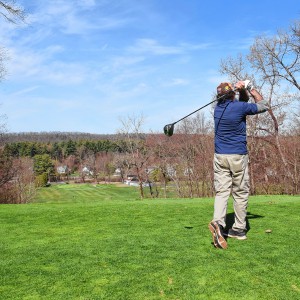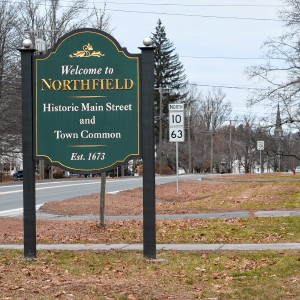Speaking of Nature: A new bird for a new year
| Published: 01-11-2021 8:57 AM |
Almost everyone has a routine that they follow on a daily basis. Wake up, see to needed ablutions, get something to eat and then … well, you get the idea. Like almost everyone, I have found that my daily routine has been adjusted this winter. I no longer have to get up quite as early as I used to and I no longer have to drive to work. Now I make my commute to my office where I present my lessons online.
There are pros and cons to this new schedule and this morning I feel a desperate need to focus on the pros. What is something good that is happening? Well the answer is a simple one — birds. I am home near my feeders on a daily basis and I have been able to increase my time observing birds by a great deal. I still fill up the feeders in the dark, as I always used to, but just before I have to start my classes I can peek out onto the deck and see who is out there in the light of dawn.
To be honest, I had hoped that the increase in my time at home would translate into larger numbers of species observed, but things just haven’t worked out that way. You can only see the birds that are present and more time observing simply translates into more time observing the same species. I continue to keep my eyes and ears open for something new and different, but things have been quiet. There has been a single, wonderful exception to this pattern, however.
Last Wednesday, I stepped out onto my deck just after my last class of the day had ended. On a normal day of school, this would have been time that I spent in the car on my way home, but my new routine includes a trip to fill the feeders during my “commuting time.” It was a cold, gray day and the birds were all in attendance. Chickadees became quite talkative and I happily imagined that they were asking me about my day. In fact, I suspect that they were really asking about what took me so long. Whatever the truth might have been, I smiled and I instantly felt better.
As usual, the juncos, white-throated sparrows and American tree sparrows all scattered when I stepped out onto the deck and as I turned to the left to refill the feeder hanging in the cottonwood tree I noticed the little flashes of feathers that I would normally expect to my right. Then I noticed something very odd indeed.
From the left, in the direction of my front door and my garage, I noticed another bird fly up from the ground. While not completely unheard of, this was certainly unusual. So I turned my gaze toward the movement and brought more of my visual abilities to bear. Now, instead of just seeing movement, I could also see color and the bird I saw suddenly became more interesting. Instead of the grayish feathers I would expect from the sparrows, I saw a light, creamy golden color.
The bird landed in the cottonwood tree on a branch that extended out from the trunk in the exact opposite direction that I was looking. Thus, for just a moment, the bird disappeared from view. So I moved a little to see if I could peer around the trunk to get a good look at this mysterious little creature and when I did I discovered that the bird had arrived at the same idea. In the end, we both peered around the trunk of the tree and found the other peering back.
Well, as soon as I saw the bird’s face I knew who I was looking at. The brown feathers of the head were broken by a creamy white “eye stripe.” Underneath the long, slender, decurved beak there were white feathers on the throat that gradually transitioned to the color of eggnog and finally the color of honey on the belly feathers. This was a Carolina wren!
Article continues after...
Yesterday's Most Read Articles
 New owners look to build on Thomas Memorial Golf & Country Club’s strengths
New owners look to build on Thomas Memorial Golf & Country Club’s strengths
 Survey shows Northfield residents want new development — but not near their homes
Survey shows Northfield residents want new development — but not near their homes
 Orange man gets 12 to 14 years for child rape
Orange man gets 12 to 14 years for child rape
 As emergency action plan is crafted, Tree House to maintain 1,500 capacity for summer
As emergency action plan is crafted, Tree House to maintain 1,500 capacity for summer
 Real Estate Transactions: April 19, 2024
Real Estate Transactions: April 19, 2024
 Man granted parole for role in 2001 deaths of 2 Dartmouth College professors
Man granted parole for role in 2001 deaths of 2 Dartmouth College professors
Another species that has been expanding its range to the north over the past few decades, the Carolina wren is a bird that I was unfamiliar with as a boy. Western Massachusetts didn’t really have any of these little birds in the ’80s, but now they are a fairly common sight in summer and winter. Altitude still plays a role in their actual range, but more and more people may notice this “new” species as time goes by. This is especially true for Rachel S., who sent me a photo of a Carolina wren on Jan. 3!
So, keep your eyes peeled! Every time you catch a flash of wings you should try to get the best look that you can. Ninety-nine times out of a hundred, it will just end up being a familiar friend, but every once in a while you may actually spot something new. I hope that you are able to find respite from the human world by turning your attention to the natural world. I also hope that a chickadee makes you laugh today.
Bill Danielson has been a professional writer and nature photographer for 23 years and his mother has been taunting him with her plentiful Carolina wrens for about 20 years. He has worked for the National Park Service, the US Forest Service and the Massachusetts State Parks and currently teaches high school biology and physics. Visit www.speakingofnature.com for more information, or head over to Speaking of Nature on Facebook.

 Speaking of Nature: Indulging in eye candy: Finally, after such a long wait, it’s beginning to look like spring is here
Speaking of Nature: Indulging in eye candy: Finally, after such a long wait, it’s beginning to look like spring is here Celebrating ‘Seasonings’: New book by veteran preacher and poet, Allen ‘Mick’ Comstock
Celebrating ‘Seasonings’: New book by veteran preacher and poet, Allen ‘Mick’ Comstock Faith Matters: How to still the muddy waters of overthinking: Clarity, peace and God can be found in the quiet spaces
Faith Matters: How to still the muddy waters of overthinking: Clarity, peace and God can be found in the quiet spaces A time for every purpose under heaven: Free sing-a-long Pete Seeger Fest returns to Ashfield, April 6
A time for every purpose under heaven: Free sing-a-long Pete Seeger Fest returns to Ashfield, April 6
